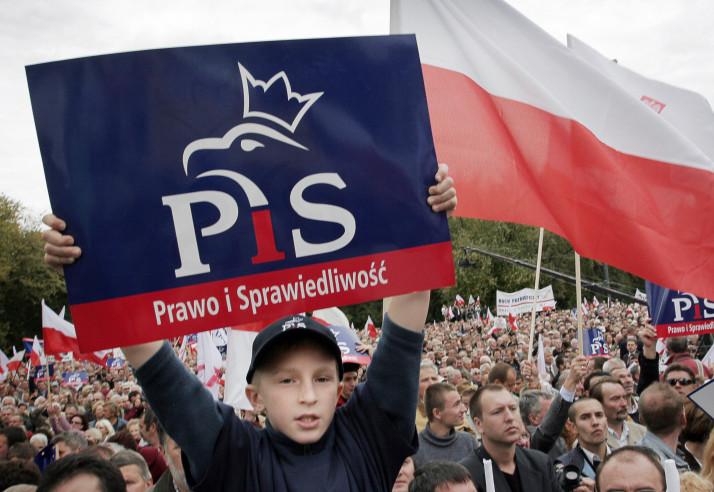Neo-Nationalism in Central and Eastern Europe
archive


Neo-Nationalism in Central and Eastern Europe
The political victories of the national-conservative Fidesz party in Hungary in 2010 and 2014, and the PiS (“Law and Justice”) party in the 2015 presidential and parliamentary elections in Poland, raise the question of a more general nationalist turn in Central and Eastern Europe (CEE). Some observers have pointed to the authoritarian nature of Fidesz and PiS, particularly in light of institutional changes both parties implemented once in power. While the new populist nationalism sweeping the globe is not in every case anti-democratic since it often strives to mobilize majorities in order to win elections, it is nevertheless not a trivial development because it encourages conflict and polarization and tends to depict political opponents as “enemies of the people.” This makes an assessment of nationalist populism difficult.
Fidesz won the 2010 Hungarian elections with 52.73% of votes, which gave the party a constitutional majority in parliament allowing it to change the constitution at will, carry out controversial Constitutional Court appointments, and change electoral laws. In particular, the so-called “fourth amendment” to Hungary’s constitution—which according to some observers limited the independence of the judiciary, brought universities under governmental control and opened the door to political prosecutions—provoked criticism from the European Union and the Venice Commission of the Council of Europe, as well as other organizations outside the continent. At the same time, the Fidesz government introduced a number of social measures aiming to improve the living standards of average citizens. The government resorted to taxing banks, retail sales networks, and energy and telecommunication companies while increasing family support and introducing a flat income tax. In 2013, electricity, gas, and central heating prices were reduced by 20%, and energy price reductions became the leitmotiv in Fidesz’s campaign ahead of parliamentary elections in April 2014. Despite international criticism, Fidesz won with 44.87% of the vote, this time missing the constitutional majority.
In Poland, the PiS candidate Andrzej Duda unexpectedly took 51.55% in the presidential elections of May 2015, beating the incumbent and quite popular President Bronisław Komorowski. Then, PiS won the parliamentary elections in October with 37.58% and was able to form a one-party government, but without a constitutional majority. Shortly after the government was formed a series of reforms were hastily introduced, including new media and counterterrorism laws, and controversial appointments at the Constitutional Court soon followed. A new law of December 2015 changed the set-up of the Constitutional Court and introduced a new two-thirds majority rule, which some observers argued made it de facto difficult for the court to act at all, thus weakening the checks-and-balances principle vital for democratic pluralism.
While the new populist nationalism sweeping the globe is not in every case anti-democratic since it often strives to mobilize majorities in order to win elections, it is nevertheless not a trivial development because it encourages conflict and polarization and tends to depict political opponents as “enemies of the people.”
Like Fidesz, the PiS came to power with promises of new welfare benefits. In 2016, a new instrument of child support was introduced and the medication refund scheme for senior citizens was activated in the second half of the year. A program of apartment construction destined for young families was launched as well. In order to finance these expenditures a new banking tax was established and new measures to reduce VAT fraud were introduced.
It may be asked whether all of this is authoritarian populism or just a long overdue social redistribution? Opinions differ on this question, but there is consensus on one issue: both Fidesz and PiS want to concentrate as much power as possible in their hands and do not hesitate to disempower democratically relevant institutions standing in their way.
The socioeconomic background of FIDESZ and PiS success
The political turn in Hungary and Poland is often explained by a socioeconomic hypothesis centered on pathologies of liberal governance in Central and Eastern Europe (CEE). Neoliberal capitalism was introduced in both countries at its historical peak of popularity in 1989-1990 and was the main driver of the CEE transition from communism to market economies. On the one hand this generated the positive effects of economic growth and an increase of average living standards. On the other hand, the non-transparent privatization processes and lagging institutional reforms manifested specific governance pathologies in Hungary, Poland and other CEE countries. The hypothesis suggests that 20 years into the post-Communist era and despite EU membership, the CEE version of governance is seriously limited in responding to the social needs of the region’s transforming societies. For instance, despite positive macroeconomic development, both young people and senior citizens in CEE have endured existential pressures for many years with governments unable, and partly unwilling, to strengthen the welfare systems and balance growing social inequality.

Image: Wojtek Radwansk (AFP-Getty)
As a result, in the past ten years, more than 2.3 million young Poles decided to emigrate to the United Kingdom, Ireland, the Netherlands, and Germany to participate in the more attractive labor markets of Western Europe. The majority of Polish pensioners have to live on $425 per month and, until 2016, pay the full cost of medicine. In addition, Polish pensioners are heavily indebted; their accumulated debt burden was roughly equal to $478M in 2015.
The public health system operates poorly due to chronic underfunding, and as a consequence the majority of Polish citizens have to use private medical services, despite the fact that the average Polish household’s net financial wealth is $10,919 compared to the OECD average of close to $67,000. Given these circumstances, the PiS came to power because many members of Polish society were expressing their desire for more profound political change.
Similarly, in 2010 Fidesz took power in Hungary at a time when the country was mired in political and economic crisis, having fallen into its deepest recession in a decade. An agreement with the IMF was strongly criticized by Fidesz, which was making election campaign promises to end austerity and open a new beginning in economic policies.
In both Poland and Hungary, the sentiment was broadly shared in society that numerous governments after 1989 used state agencies and enterprises for cronyism and politico-economic clientelism, draining financial resources from the state budget that otherwise could have been invested in higher education, research, health, and pension systems. Secret tape recordings that documented high levels of cynicism in the previous ruling parties (in Hungary in 2006 and in Poland in 2014) precipitated scandals, public outrage, and political change in both countries.
It may be asked whether all of this is authoritarian populism or just a long overdue social redistribution? Opinions differ on this question, but there is consensus on one issue: both Fidesz and PiS want to concentrate as much power as possible in their hands and do not hesitate to disempower democratically relevant institutions standing in their way.
At the same time, foreign capital has not only been unable to substitute for many of these structural difficulties but has produced other problems, such as real estate bubbles and precarious mortgages. According to some critics, while international corporations, banks, and consultancies have mushroomed all across Poland and Hungary, CEE countries have become virtual assembly lines for foreign producers that do not maintain Research and Development departments in these nations and, in many cases, pay their taxes in other EU countries with a lower VAT tax. For instance, in Poland 70 percent of the entire tax burden is carried not by European or transnational enterprises, but by small and medium-sized firms of local origin.1
Outlook
On 13 January 2016, for the first time in its history, the European Union initiated a formal investigation against one of its member states, Poland. The investigation was intended to inquire whether new laws introduced by the PiS government are in accordance with the rule of law and the fundamental democratic values of the EU. Thus did Poland become the second CEE country after Hungary that raises fears of an authoritarian backslide in the region.2
There are numerous ideological affinities between the Hungarian governing party Fidesz and the Polish PiS, mainly regarding their blend of national conservatism with proactive social policies. Moreover, the constitutional crisis in Poland, which raised worries about the concentration of power, is not dissimilar to developments in Hungary.

Kriszta Nagy, Viktor Orbán, 2014.
Nevertheless, the Hungarian case seems different from Poland’s despite some commonalities. Hungary’s 2010 political turn under Viktor Orbán may be viewed as the more populist and authoritarian development, given the Orbán government’s early constitutional majority that allowed for direct changes to the constitution with respect to the Constitutional Court, public and private media, limitations on the freedom of speech, and problematic changes in the electoral law favoring large parties like Fidesz, Orbán’s own. One of the key new provisions was the aforementioned “fourth amendment” for which there is no parallel in Poland (or not yet, as pessimists like to predict). In Poland there is a free press, if entirely private and largely international, substantially free TV and radio outlets (with the exception of state media that remain up for grabs after each and every election), and no limitations on civil liberties.
In conclusion, the question remains whether the ruling parties in Poland and Hungary are prepared to cross the red line of democracy in order to stay in power, as has occurred in Russia and Turkey. Until now, Poland has enjoyed a vibrant civil society that has challenged the government on several occasions. This is less the case in Hungary where both the civil society and opposition parties cannot offer a real political alternative to Fidesz. The next big democratic tests in these countries are the 2018 Hungarian and 2019 Polish elections, which will be carefully watched. While Fidesz is likely to win again, the result is far from certain for PiS.
1 Nölke, Andreas and Arjan Vliegenthart. (2009). "Enlarging the Varieties of Capitalism: The
61(4): 670-702.
2 Ágh, Attila. (2015). "De-Europanization and De-democratization Trends in ECE: From the
Politics 8(2): 4-26.




